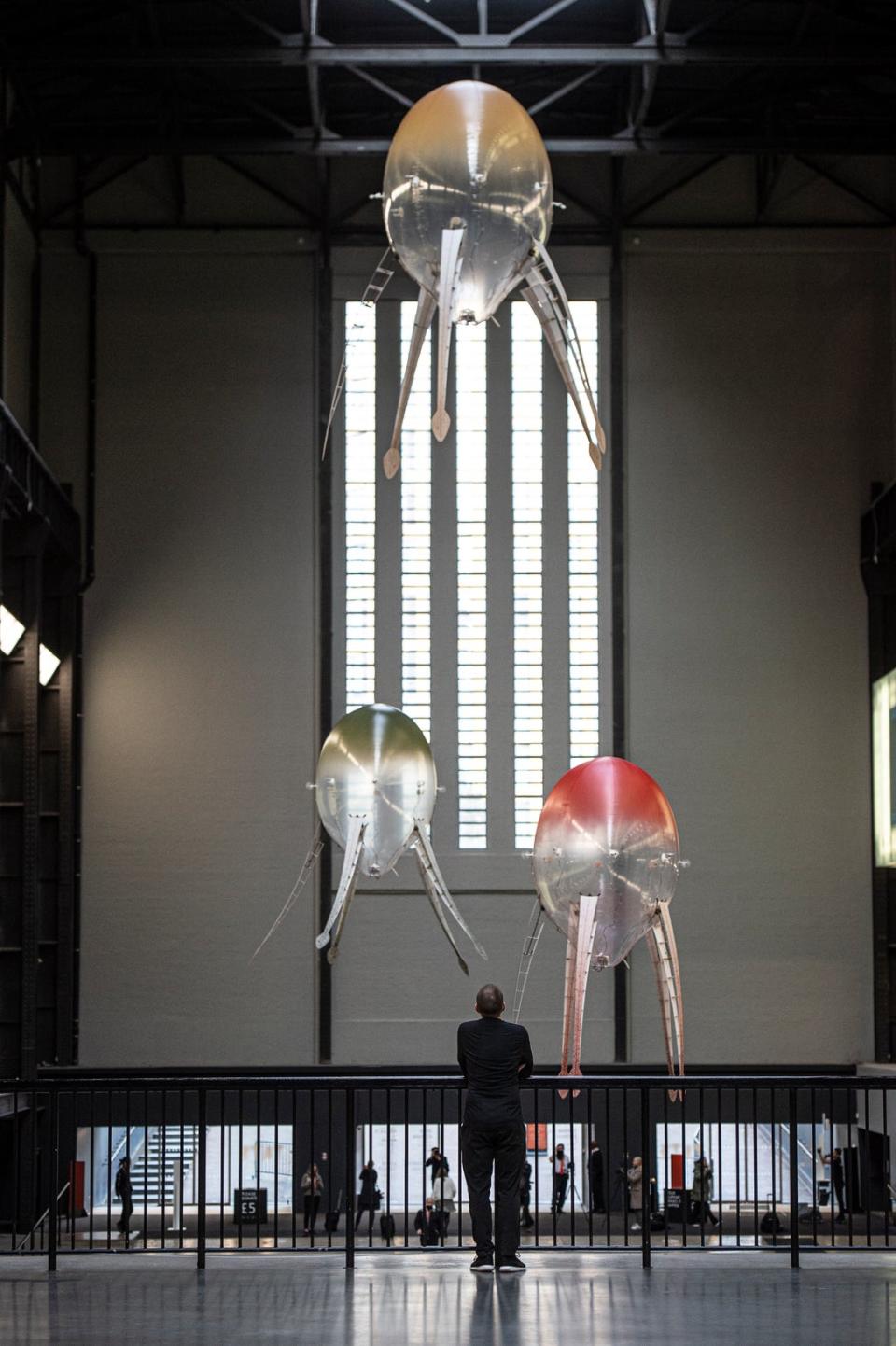Hyundai Commission: Annicka Yi at Tate Modern: these airborne jellies will be a hit

From the moment you walk into the Turbine Hall, it’s clear that Tate Modern has another hit on its hands. Jellyfish-like forms float through the this industrial cathedral, propellers whirring on their sides, so they buzz as they drift through the perfumed air above you.
The perfume was the only given about Anicka Yi’s Hyundai Commission, titled In Love with the World: for her, smell is an art medium, and the air a cultural space, filled with substances symbolic of political, social and environmental structures. She effectively sculpts the air around you, here with scents that evoke the long history of Bankside, where Tate Modern stands, but nod to present issues. Yi’s research led her to a historic pandemic, the Black Death, and the scents used in the attempt to counteract it, and to environmental smells from geological eras: marine whiffs from the Precambrian period, the aromas of plants from the Cretacious period. We don’t know exactly what we’re smelling, but the Turbine Hall’s air today is spicy, smoky, musky.
Yi calls those jellyfishy forms aerobes, and there are two types. “Xenojellies” are transparent forms with coloured tips, and five tentacles with distinctly hued cellular patterns. They have rotors at the base, and wires resembling veins inside their skins. They’re informed not only by marine species but by mushrooms. The fungi comparison is more noticeable in the others, the “planulae”, which resemble giant puffballs, and move more steadily. They’re covered in tiny hairs. Of course, they’re also airborne sculptures and evoke the history of the discipline: I thought of Philippe Parreno’s inflatable fish in Turbine Hall in 2016, of Eva Hesse’s experimental forms, even Naum Gabo’s plastic modernist shapes.

The aerobes are uncrewed aerial vehicles, or UAVs, and respond to elements of the environment, triggered by sensors around the Turbine Hall – heat’s particularly important, so when visitors throng here, the xenojellies in particular will respond to bodily warmth. They’re triggered by an “artificial life program”, and act as individual beings, behaving independently of each other – whirring, gliding through the air, spinning, sometimes returning to the battery pool, a structure where Yi’s team recharge them.
This is art as speculative fiction: imagine a future where we live with sentient machines, responding to environmental conditions (and perhaps much more). How you view this work might depend on how optimistic you are: do these living machines make you “in love with the world” and its possibilities, as per Yi’s title, or fearful for it?
From tomorrow, to Jan 16, tate.org.uk
Read More
Jellyfish fly high at the Tate in latest Turbine Hall commission
Elizabeth & Mary: Royal Cousins, Rival Queens at the British Library
Eva Langret of Frieze London: the woman carrying the art world’s hopes

 Yahoo News
Yahoo News 
